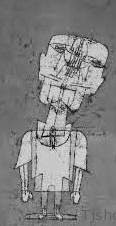the phase structure of CDT
In my previous post I criticized the description of the CDT phase diagram on a popular physics blog.
In this post I want to actually talk about the numerical CDT results.
The phase diagram depends on two coupling constants K and D (in the text they use kappa and delta). While K corresponds to the gravitational coupling, D measures the ratio of 'timelike' and 'spacelike' edges; I use quotes ' ' because the simulation is actually done in the Euclidean sector, but edges fall in different categories, depending on what kind of distances they would correspond to after Wick rotation. There is a third coupling parameter, which corresponds to a cosmological constant, but it is fixed for technical reasons.
As I already explained, one looks for a critical line in D,K corresponding to a 2nd order phase transition and the reason is that long-range fluctuations are associated with such a transition, so that the details of the discretization do not matter any more.
So this is what I find weird: The parameter D describes a detail of the discrete model and the hope is to fine tune D, as a function of K, in order to find a critical line where the details of the discretization no longer matter...
The authors notice that D has "no immediate interpretation in the Einstein-Hilbert action" and thus the critical value D(K) does not correspond to any feature of the continuum limit - unless the continuum limit is not Einstein-Hilbert but Horava-Lifshitz gravity. This is what the authors propose and discuss in section 4 of their paper: HL gravity breaks diffeomorphism invariance of EH gravity, just like CDT does, and the parameter D would have a 'physical' meaning in this case.
It seems that the authors hope that EH gravity will be restored somewhere along the critical D(K) line, however, it is unlikely imho that there is such a path from HL gravity to real gravitation.
backreaction
It seems that an internet tradition is emerging, whereby a blog remains dormant for a while, until something so outrageously wrong appears on the interwebs that one has no choice but to respond to it.
In my case, Sabine Hossenfelder wrote about the phase diagram of CDT on her popular physics blog and I just have to set a few things straight:
1) We read that "... most recently the simulations found that ... space-time has various different phases, much like water has different phases".
But, of course, the phase structure of various lattice gravity models has been studied (implicitly and explicitly) since the early days of lattice gravity simulations, i.e. the 1980s. If one wants to find a reasonable continuum limit for such a model, then one has to examine the phase structure of the lattice model; In general, if the model has one or more coupling parameters then it will (most likely) exhibit different phases, just like water.
2) The holy grail to a physically interesting continuum limit is the existence of a non-trivial fixpoint, which appears in the phase diagram as a 2nd order phase transition. IF such a transition exists for CDT, it will be located on (one of) the critical lines and perhaps at the tri-critical point. The continuum limit will not appear in the area C of the diagram; There you certainly cannot "share images of your lunch with people you don’t know on facebook".
As far as I know, the existence of such a 2nd order transition has not been demonstrated yet, although intriguing hints have appeared in other lattice models previously. Of course, even IF such a 2nd order transition could be demonstrated, one would still not know if the continuum limit has anything to do with gravitation as we know it.
3) This 2nd order phase transition is prerequisite to a consistent continuum model and all 4d geometries would be generated with the same critical parameter values. It is therefore misguided to imagine that this phase transition happened at or near the big bang.
Indeed, the coupling parameters depicted in the phase diagram are bare, i.e. un-renormalized, coupling parameters and while the diagram may indicate existence and location of a non-trivial fixed point, almost all of the phase diagram is actually non-physical.
Therefore one cannot expect that this phase transition may be an alternative and/or replacement for inflation (as Sabine discussed in the comments).
Subscribe to:
Posts (Atom)
